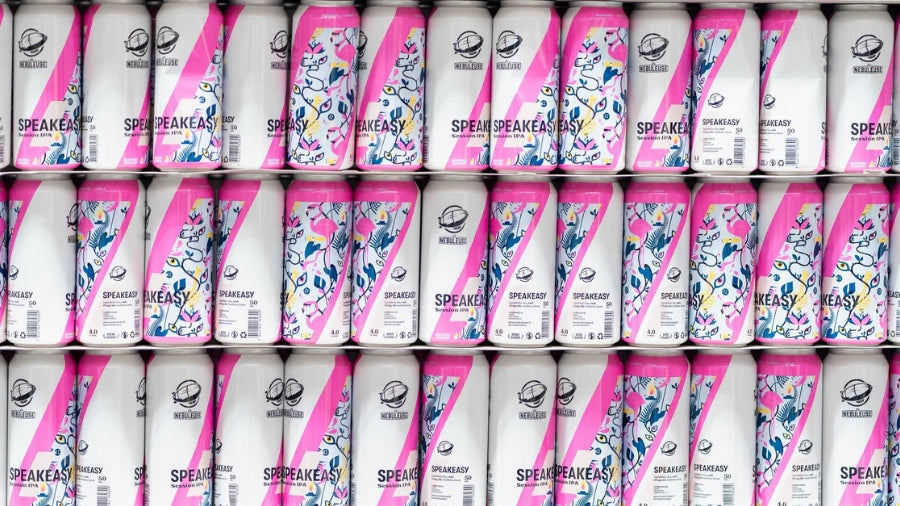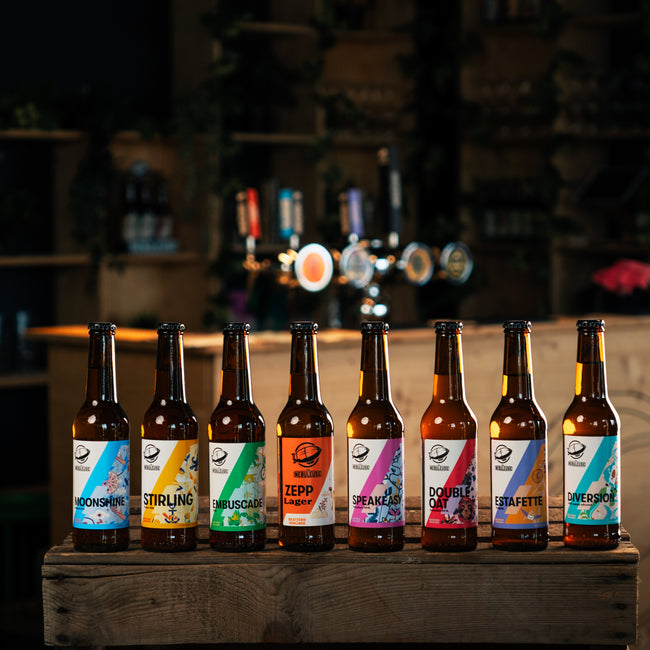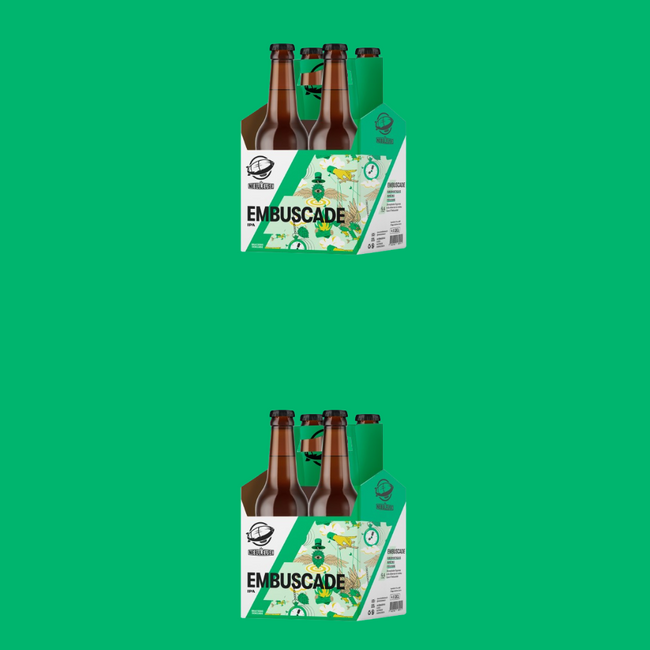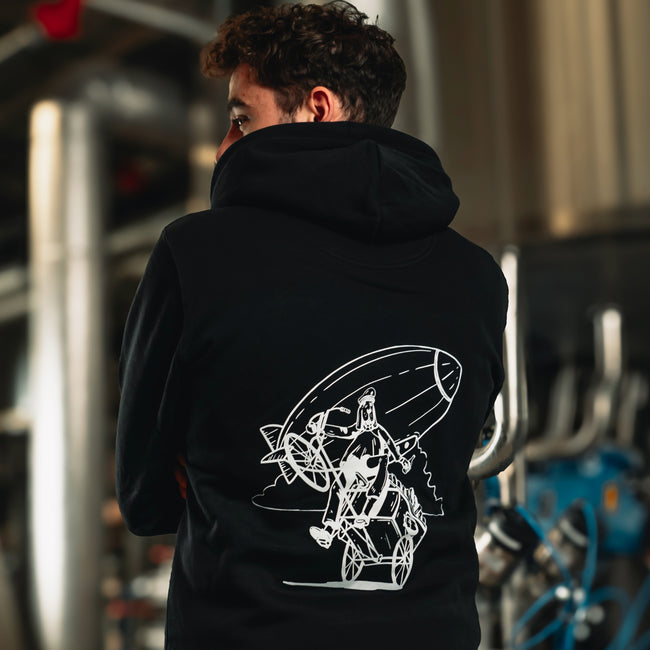IPA Session, the new face of hoppy beers

The IPA has redefined the taste of hops. Powerful, bitter, aromatic… a mouth-popping style that has won over craft beer lovers. But sometimes, you want that intensity without the alcohol. That's where the Session IPA comes in.
With its ultra-hoppy profile and low alcohol content, it has become a popular alternative for those who want to enjoy the flavors of hops without the heaviness of a classic IPA. More than just a passing fad, it's a technical balancing act that pushes brewers to excel: how to retain maximum aromas with a lighter malt base?
Far from being a cheap IPA, Session IPA stands out as a style in its own right. And if it's earned a place among the most popular beers, it's because it has more than one trick up its sleeve.
the IPA that plays the balance card
What is an IPA Session?
A few years ago, a 6 or 7% ABV IPA was still considered a light beer. With the explosion of Double and Triple IPAs, a new trend has emerged: retaining all the hoppy character of the style, but with a more reasonable alcohol content.
Session IPAs typically range between 3.5 and 4.5% alcohol. Its name comes from "session beers": light beers designed to be drunk over a long period of time without becoming saturated or heavy. But beware of preconceived notions: this is not a watered-down IPA. It must retain a powerful aroma, generous hops, and a balanced bitterness.
The aromatic DNA of a Session IPA
Alcohol plays a role in mouthfeel, but it's the hops that define an IPA . In a Session IPA, it's even more crucial, providing depth and complexity to compensate for a lighter body.
The hop varieties used are often those that explode with fruity and resinous aromas. Cascade, Citra, Mosaic, and Mandarina Bavaria are among the most popular. But to prevent a Session IPA from turning into a harsh bitterness, brewing is essential.
Precise dry hopping maximizes aromas without extracting too much bitterness. A balanced selection of malts adds body without weighing down the beer. Well-controlled fermentation develops subtle esters. This finesse of execution allows for the creation of an expressive beer.
Brewing a Session IPA: Less alcohol, same intensity?
The technical challenge: preserving the taste without making the beer heavier
Brewing a Session IPA is like trying to make a strong espresso… but with less coffee. The challenge is to find the balance between aromatic intensity and lightness.
If the malt base is too light, the beer will appear flat. If the bitterness is too strong, it will become abrupt. Light malts like Pilsner or Carapils are preferred, sometimes with a touch of wheat or oats to improve the texture. Fermentation must be precise to avoid any impression of a beer that is too thin.
Hopping is a key element. A Session IPA can't rely on alcohol to carry its aromas, so it must maximize the extraction of hop compounds without excess bitterness . Dry hopping, which involves adding hops late in fermentation, is often used to intensify fruity and floral aromas.
A successful Session IPA is a beer where each sip remains intense in flavor, without heaviness or saturation.
The Speakeasy: The Example of a Well-Balanced Session IPA
In the world of light IPAs, some achieve this balance particularly well, and the speakeasy is a good example. At 4.0% alcohol , it combines a light but structured body with a punchy aromatic.
Its hops rely on Herkules for a clean bitter base, Cascade for its floral notes, and Mandarina Bavaria for a touch of citrus. The result is a fresh beer, where the intensity of the hops never overwhelms the drinkability.
Each sip prolongs the pleasure without saturating the palate. This is precisely what defines a well-executed Session IPA: a beer that retains all the expressiveness of the hops without the saturation effect of a more alcoholic version.
Session IPA: A style in full flux?
A diversity of interpretations in the brewing world
Session IPAs don't have rigid specifications. Some breweries go below 4% alcohol, seeking maximum drinkability, while others flirt with 5%, close to a hoppy Pale Ale.
Style sometimes blurs the lines. Some Session IPAs could almost be classified as American Pale Ales, so similar are their hop intensity and alcohol content. Others are reminiscent of NEIPAs, but with a lighter texture and more controlled bitterness.
What makes this style so successful is the brewers' ability to find the perfect balance between aromatic power and lightness. Too light, and it loses depth. Too bitter, and it becomes abrupt.
The Future of Session IPAs: Where is the Style Headed?
Brewers are constantly innovating to refine their Session IPAs and push their boundaries. The evolution of hop varieties has a major impact on the style. New varieties like Strata, Sabro, and HBC 586 offer even more explosive aromas of tropical fruits and citrus, allowing for more intense flavors without increasing the alcohol content.
Fermentation also plays a key role. Some breweries are experimenting with more expressive yeasts, which develop fruity esters or spicy notes, adding complexity to low-alcohol beers.
With the rise of light and accessible craft beers, Session IPA is establishing itself as an essential alternative to classic IPAs.
An IPA that has it all figured out
Far from being a simple, lightweight version of the IPA, the Session IPA has established itself as a style in its own right. It embodies this desire to push the limits of hops while maintaining maximum drinkability.
It's so appealing because it ticks all the boxes: intense in aroma, refreshing, accessible, and balanced. Its success lies in a subtle balance between a light body and a punchy aroma, a feat that brewers perfect by varying the selection of hops, fermentation, and cold hopping.
With the evolution of brewing techniques and the arrival of new, ever-more expressive hop varieties, the Session IPA continues to reinvent itself. More than just a trend, it seems poised to become a staple of the brewing landscape.









